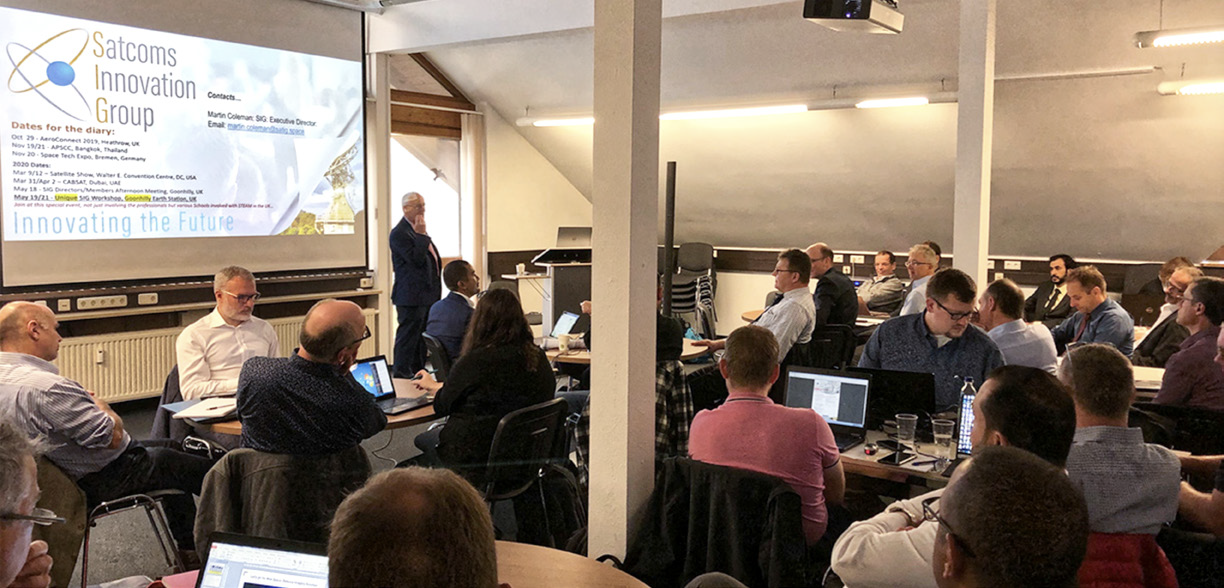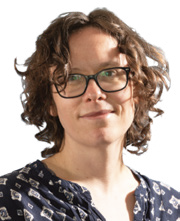Helen Weedon, Managing Director, the Satcoms Innovation Group (SIG)
The Satcoms Innovation Group was originally founded in 1997 as the Satellite Users Interference Reduction Group, with the aim of tackling the growing problem of Radio Frequency Interference (RFI).

At the time, the industry was faced with huge levels of interference and, in fact, it was the broadcast customers who were being hugely impacted and they were the first to ask the industry to resolve it.
Since that time, we have seen a number of initiatives aimed at mitigating interference and, while it is still a problem, the industry now has a plethora of tools to resolve this issue at their disposal.
This was the main reason for the group widening our remit, although interference remains an important focus area for us. However, could the rise of newspace and evolving space environment see RFI become more prevalent?
________________________
The Impact of RFI
________________________
RFI has long plagued the industry, causing financial, operational, and reputational damage to organizsations. In the worst cases, it might cause downtime for a customer. In other cases, the operator is able to move impacted customers to another part of the network before damaage is caused. However, that renders huge swathes of spectrum unusable if the source of RFI is not discovered and resolved. Naturally, this has an immense financial impact on operators, whether through the necessity of compensating impacted customers or through the inability to monetise certain portions of the network.
In 2013, SIG conducted a survey that showed the majority of interference was caused by human error, closely followed by equipment failure. We recently captured some anecdotal evidence that suggests human error remains the leading cause of RFI. That said, deliberate jamming also remains a problem and, of course, becomes much more prominent during political unrest.
_______________________________
The Tools in the Toolbox
_______________________________
There are a number of ways to deal with interference. The ideal fix is to stop it from occurring in the first place. Proactive approaches are therefore valuable, such as extensive training to reduce human error and consistent and ongoing testing to ensure equipment is operating as expected.

Most operators have, for some time now, insisted on some level of testing of ground station equipment before it is allowed onto the network. The challenge arises when each of these varying sets of requirements, making it difficult for manufacturers to adhere to all of them. This is why initiatives, such as the Satellite Operators Minimum Antenna Performance (SOMAP) are important, enabling some level of standardisation to speed up this process without compromising on quality.
There are also a number of tools and processes in place to tackle interference once it occurs, as it inevitably does. We have seen initiatives such as Carrier ID, which aimed to add an ID to carriers so it would be easier and quicker to identify the interfering carrier and the operator. Since then, technology has evolved to make this much more automated.
One of the biggest tools in the toolbox is connections, something that SIG has been integral in forming. If RFI occurs between two operators, knowing who to contact at the other operator and also how to contact them, greatly speeds up the process of identifying and resolving the interference.
RFI in the Modern Space Environment
The industry has evolved dramatically over recent years. While much of that evolution is vital for moving the industry forward and keeping it vibrant and competitive, it is also bringing a number of challenges, including the management of RFI.

The growing move toward New Space and multi-orbit constellations is dramatically changing the SATCOM industry on a number of levels. We don’t yet know the full scale of the potential impact of RFI between different orbits, but with a huge volume of LEO satellites currently launching, and due to launch over the coming years, there is a growing concern of the impact that could have across all orbits and all services. Simultaneously, we are seeing new players enter the market who are perhaps unaware of the historical situation surrounding RFI or have the correct tools or contacts to ensure effective mitigation.
Evolution breeds innovation, something definitely needed and much welcomed. We are seeing terminals capable of switching between orbits, a move to more cloud-based workflows and, in particular, a huge range of flat panel antennas flooding the market to enable Comms-On-The-Move (COTM), even in the most challenging of environments. While these are vital to keeping the industry moving forward, it is important that we maintain high levels of quality. However, at the same time, growing competition from within and outside the SATCOM industry means that the industry is under greater financial pressure than ever before experienced. While this innovation is needed, all too often the rigorous testing procedures we previously adhered to are being reduced... or even skipped altogether.
This is further challenged by the fact we live in a world with huge levels of geopolitical uncertainty, in an era where it is all-too-easy to move the battlefield to space. This will invariably lead to a rise in deliberate interference and other aggressive acts that will make this situation even more challenging. Add to all of this the sheer volume of objects on-orbit, and therefore the sheer volume of data being transmitted over satellite, and it is clear we have the potential exists for serious problems.
______________________
How do we retain control?
______________________
Many of the tools and processes identified in the first wave of action against RFI are still valid. Much of what was valuable before was the raising of awareness of the problem and revealing he ways to resolve it.

Helen Weedon
I believe that this is once again extremely important, extending that conversation beyond traditional SATCOM players. RFI can only truly be tackled if we have global awareness and collaboration, with the industry working together and learning from each other.
satig.space


